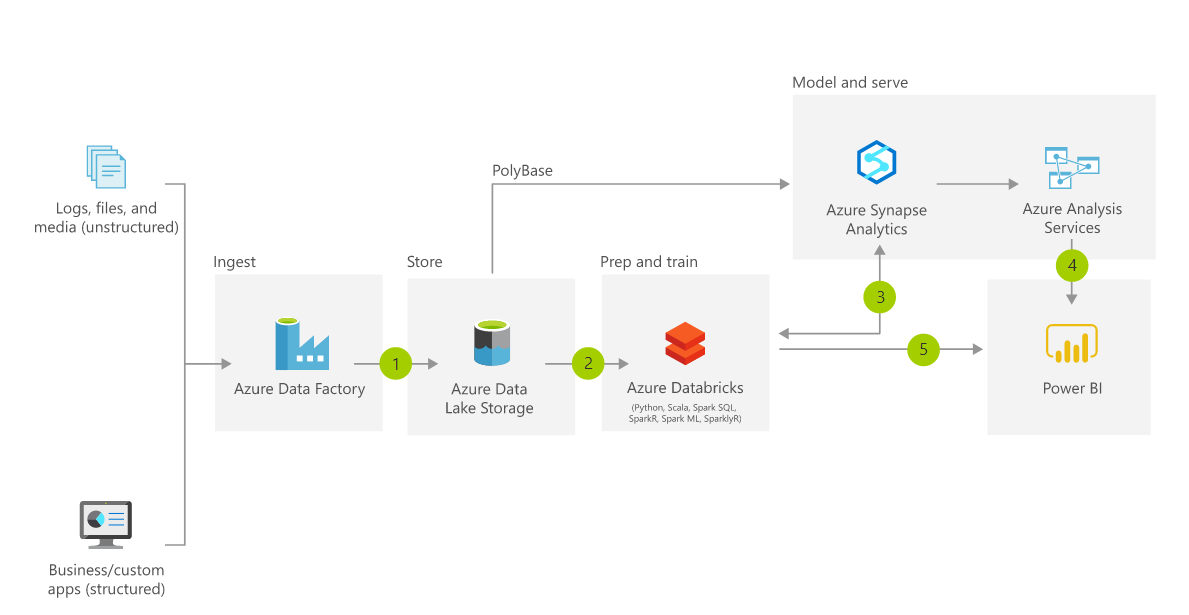You have identified the Azure services almost correctly.
If it is one time migration like lift and shift database from On-premise SQL or any other source to Azure SQL etc, you can use Data migration assistant - datamigration.microsoft.com
In your case I think you will most probably have to use Azure data factory where you set up a data ingestion flow and schedule the daily runs.
ADLS Gen2 is the resource where you can store the data and this data can be transformed
Azure databricks can be used for data processing, AAS can be used to create tabular model which will later be connected to PBI for visualization
Below is Modern data warehouse architecture proposed by Microsoft.
Reference -
modern-data-warehouse
data-warehousing

===============================================
If the response helped, do "Accept Answer" and upvote it -- Vaibhav
